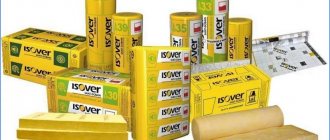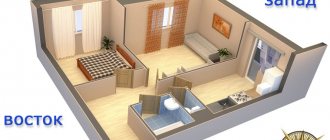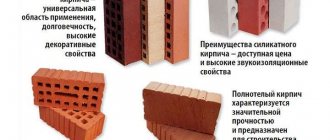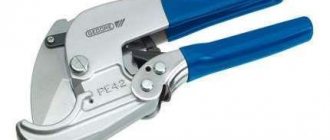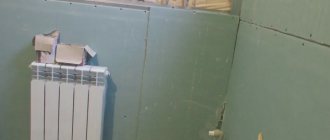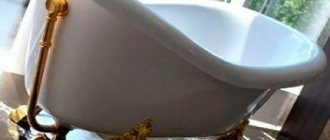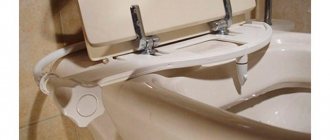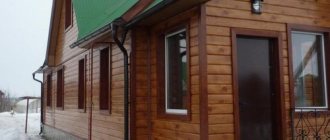One of the most labor-intensive jobs in a summer cottage is weed control. Parasitic plants take away nutrients from garden crops. As a result, the latter reduce productivity, get sick more often, and in some cases may even die. To control weeds, both mechanical methods (weeding) and chemical methods (herbicides) are used. Both of these technologies are quite effective, but have a number of disadvantages.
Weeding is a time-consuming procedure, and chemicals can accumulate in plant tissues, which makes their fruits hazardous to health. Meanwhile, there is a technique that allows you to reduce labor costs when growing garden crops and at the same time eliminate the possibility of the negative impact of herbicides. Modern enterprises have begun to produce special black weed control film. This material is relatively inexpensive and can save a summer resident a lot of time and effort.
How to fight weeds?
The Internet is replete with genial advice - to put old carpets in the garden, old linoleum, or even old roofing on the paths of the beds.
Only there is a problem: carpets in the garden are not only vulgar and not aesthetically pleasing. If you put the carpet on the bottom of a warm bed, as some unfortunate gardeners on the Internet advise in the instructions for making beds with sides, the carpet will not decompose on the bed, and you won’t even get a harvest.
Carpet or linoleum between the beds looks terrible. Yes, there are no weeds, but also a beautiful vegetable garden.
Linoleum generally deteriorates in the sun, therefore the material is not intended for the street and there is no protection from ultraviolet radiation; in frosty winters it cracks and after a few years you have to collect linoleum fragments from the garden.
The only thing worse than linoleum and carpets in the garden is roofing felt, which not only breaks into pieces, but is also harmful to health.
The photo shows carpets and linoleum in one garden.
The most harmless material against weeds is cardboard, which at least decomposes. For beauty, you can put thick spunbond material on top of the cardboard for tracks with a density of 120 g/sq. m. or gravel - you will get rid of weeds for a couple of years.
What processes occur under the film?
Weed control with black film can actually be quite successful. The edges of this material lying on the ground are usually covered with soil. As a result, a special microclimate is created in a garden bed mulched in this way. The soil under the film warms up very quickly. Therefore, weeds accelerate their development at the first stage. However, when germinating, the grass rests against a film heated by the sun. The result is the death of the surface part of the plant. After some time, the roots of the weed also rot.
Why is it necessary to cover paths?
There are several reasons for high-quality arrangement of paths with one or another coating. Most of them are well known to the owners of the plots, but still they are worth identifying again.
Properly equipped passages between garden beds solve several important problems at once
- The first reason is that the paths are constantly overgrown with weeds that grow into the beds or drop seeds that fall into the territory of cultivated plants. All this eventually turns into an endless struggle for the harvest.
- If you completely remove the weeds, but then leave the soil open, then in rainy weather it will be impossible to approach the beds without wearing rubber boots, which will then take a long time to clean from the wet soil stuck to them. Otherwise, the soil stuck to the shoes will spread throughout the remaining covered areas of the yard, and then will certainly end up in the living areas of the house.
- In addition, strips of uncovered soil completely cleared of weeds contribute to the very rapid evaporation of moisture from the beds. Therefore, water consumption for irrigation increases significantly.
- Another reason to arrange paths between the rows is to obtain absolute maximum comfort when working in the garden, and as a result, a significant increase in the productivity of this noble work.
- A vegetable garden with neatly decorated paths always looks more aesthetically pleasing than one with ordinary earthen or densely overgrown weeds.
All the negative aspects mentioned above in no way improve your mood, since even having vegetables, berries or herbs “at hand”, it is quite difficult to collect them from the garden both during rain and for quite a long time after it. Therefore, you will have to wait until the soil dries and is not slippery and sticky.
In a word, high-quality paths between the beds should be the goal of any self-respecting gardener.
Folk ways to eradicate grass
Among summer residents and gardeners, improvised means of controlling weeds are very popular. For example, boiling water, burning with fire using a blowtorch, and watering weeds with a solution of water and vodka are widely used. To destroy grass between paving slabs, spray with a mixture of vinegar (200 g), salt (20 g) and water (600 g).
Grass tends to grow much faster than cultivated plants. Closed beds will look quite aesthetically pleasing. And flower beds covered with tree bark or walnut husks will add zest to the landscape design of the site. You can cover the soil to prevent grass from growing using almost any available means. The main thing is that they do not allow light to pass through, but allow the soil to breathe and maintain water permeability.
Why do you need to care for furrows?
If you want the furrows between your beds to always look well-groomed, and at the same time want to spend less time on hard physical labor, we bring to your attention the best ideas from experienced gardeners. Yes, many summer residents have lawn mowers these days. But the problem is that no one will want to place the unit between the rows, especially if the beds have sides.
When I was little, until I was 7 years old, I lived in a private house with a large vegetable garden, designed for 2 families. I remember how my grandmother carefully cut the weeds in the furrows with a sharpened bayonet shovel. She did it with such love and filigree precision (so that the roots were cut at a certain level).
I tried this technique when I became an adult, but I’ll be honest that my back immediately made itself felt. Therefore, I began to mow the vegetation in the furrows with a flat cutter, which allowed me to abandon the thankless work, bending over backwards. True, it didn’t turn out as perfectly aligned as when using a shovel. But the neighbors never pointed a finger at the overgrown paths between my beds.
But why not take garden landscaping to a whole new aesthetic level? In this article we will tell you how and from what to make a covering for the furrow between the beds.
Agrotextiles and its varieties
Those who have been gardening for a relatively long period have probably heard, and perhaps experienced from their own experience, what agrotextiles for the garden are. Despite its artificial origin, this material is not at all similar in properties to film. It has appeared quite a long time ago and opinions about its use among gardeners and gardeners are sometimes striking in their inconsistency. But the thing is that many, even experienced gardeners, do not always see the difference between its main varieties and often call the same thing by different names. Or, conversely, completely different materials in their properties and purpose are called by the same name. We need to clear up some of this confusion.
Agrotextiles, and sometimes called geotextiles, are a common name for two types of covering material for beds made from polypropylene: non-woven material (agrofibre) and, in fact, fabric (agrofabric).
Historically, agrofibre was the first to appear, the technology for its production is called spunbond - in recent years this name has become almost a household name for all materials with covering properties. The texture of agrofibre resembles a material with many small round holes.
Agrofibre comes in different densities and colors: from the thinnest (17 g/sq. m) to the densest (60 g/sq. m). The colors are white, black, and in recent years multi-colored ones have appeared: black and white, red and yellow and others. Only dense black agrofibre is suitable as mulch.
To do this, it needs to be laid with white on top.
Agrofabric is a woven material of high density (from 90 to 130 g/sq. m). Due to its woven base, its texture is an interweaving of threads that form cells. It is most often black, but green and brown are also found.
Why do we need paths between beds?
Garden paths improve the aesthetic perception of a summer cottage. No one will deny that with them the site looks more beautiful. However, their presence is not just a tribute to fashion. First of all, they allow you to move around the site as conveniently as possible.
In this case, you will have to take into account that the path is only a temporary solution to the problem. It will not be possible to move carefully along such dirt paths all the time. After the first heavy rain or heavy watering, not a trace of the trodden paths will remain. It is unlikely that anyone will enjoy walking ankle-deep in mud.
It is for this reason that summer residents decide to build garden paths. The easiest way to solve the problem is to visit a specialized retail store. There you can purchase all the necessary materials. The stores offer a wide selection of durable and beautiful paving slabs.
However, you will have to spend a considerable amount to purchase the required quantity of building material. You will also have to provide for additional costs to pay for the services of craftsmen who will lay out garden paths.
If your budget is limited and there is no way to purchase special paving slabs, you can take advantage of the suggestions of experienced summer residents who will show you how to make paths from scrap materials.
Black agrofibre or two-tone material?
Amateur gardeners, as well as farmers who grow fruits and vegetables on a large scale, are freed from the need to purchase and use herbicides against weeds. They also don’t have to spend time at their summer cottages with hoes, spending a lot of physical effort and time on weeding. There are simply no weeds. Only useful crops grow in even rows.
In addition, the fruits remain clean after rains, since they do not come into contact with the ground. Strawberries grown on beds covered with agrofibre can be harvested immediately after rain. The berries lie on a dry cloth and have an excellent presentation. They can be served on the table, lightly rinsed from dust, or taken to the market for sale. Using black mulching agrofibre, you can achieve earlier ripening of the crop. It is possible to reduce the growing time of crops to two weeks by early warming up the soil under cover.
Criteria for choosing coverage for paths between beds
To figure out which covering option for a garden path will be optimal, you first need to understand what criteria it must meet. “Indiscriminate” use of everything that comes to hand can lead to the material of the paths seriously harming the crop.
So, the coating must meet the following requirements:
- The material used is environmentally friendly, unable to harm either plants or soil during the entire period of operation.
- The coating is UV resistant and does not allow sunlight to pass through.
- The material is not afraid of moisture and is waterproof;
- Since the paths can also be used in the autumn, “waiting” for the ripening of late crops, a material is needed that is not afraid of temperature changes, even down to negative values.
- The material ideally allows air to pass through, that is, it is “breathable.”;
- The coating is strong and durable, not subject to rotting or other biological or chemical decomposition.
To make it easier for readers to choose a method for making paths in the garden, options for arranging them will be considered below.
What to look for when purchasing material
Protection against weeds with black film will be effective, of course, only if it is chosen correctly. Many companies produce this covering material today. At the same time, the black mulching film itself may vary in technical characteristics.
When choosing this material, you should pay attention first of all to its thickness. A thin film is only suitable for warming the soil in spring. Actually, for mulching, you should take material that is stronger, more durable and thicker. Perennial crops, for example, strawberries, are usually protected from weeds with a 100-micron black film. It is not advisable to use thicker material even in this case. A very thick film is expensive and is mainly suitable only for construction work.
If annual crops are to be mulched, fairly thin material can be used. In this case, the 80 micron option is most often used.
What can the paths between the beds be made of to make them beautiful and safe?
Spunbond with a density of at least 120 g/sq.m.
It is useless to buy thinner ones; it is better to take material specifically for paths, it will at least last longer.
Gravel, stones.
It would be ideal if you pour gravel on top of the spunbond. Yes, you will have to splurge on a gravel car once, but at least the paths will be normal.
There is a drawback to this method of designing a droshky - gravel can also go into the ground over time, so they make a backing from dense spunbond or a special dense material.
Sawdust, straw.
If there is no money for gravel or tiles, but there is a lot of waste lumber, then the paths can be sprinkled with sawdust, shavings, or at least straw, mown grass. It turns out to be a completely eco-friendly garden design, and even more earthworms.
This option is good if you do not have beds with sides and you are digging up paths for next year; the soil under the straw or sawdust will be loose.
True, if you use fresh sawdust, you need to add nitrogen fertilizers or spill the sawdust itself with urea and let it sit for a year. It is believed that rotting sawdust removes a lot of nitrogen from the soil.
Tile.
Ideally, I would splurge on tiles or cement once and at least make it myself. This covering between the beds will last for many years.
Paths made from cheap tiles will still last longer than carpet.
Paths made from scraps or leftover building materials.
If there is no money for tiles, but there are bricks left after construction, then they can be used to make paths between the beds. Brick is also good because it does not have to be used to make straight beds.
If there is no brick, you can cut round pieces from wood. The only drawback of this material is that the wood rots and such “tiles” will last a maximum of 10 years. Although, if you take a dense tree, such as an apple tree, or soak it with special anti-rotting agents, the wooden path will last longer.
There is also a minus - in rainy weather the wooden path can be slippery.
Also, paths are made from leftover tiles, mosaics, and some leftovers from construction. The main cost in making a path will be the purchase of cement.
Some homely owners simply, without further ado, fill the paths with cement.
Paths made of rubber tiles.
Gardeners began to put rubber between the beds. Comfortable and non-slippery. Manufacturers have already come up with borders for tiles and beds.
There are also tiles that are used on children's playgrounds in cities. They consist of rubber crumbs - also an option for making tracks.
Manufacturers for summer residents even began to make paths from such material, and they are also sold in rolls. True, they are expensive, but not more expensive than tiles. When purchasing, be sure to check that the rubber tracks are specifically for the street. There are similar ones for indoors.
Another interesting option for designing paths is made of... rubber slate.
Rubber slate is made from rubber-fabric waste and fiberglass. True, there are still disadvantages - it is destroyed by severe frosts and it is possible that slate of the required length cannot be found, and the path looks ugly from pieces.
Natural paths.
If there is no money for materials for making long-term paths, then the most ideal option is to make wide passages between the beds and mow them. It looks good, the only cost is the borders for the beds and the labor of a mower - you will have to mow often.
How to fight weeds and grass?
Alas, besides how to care for the beds, dig, weed and mow the grass, there are no more environmentally friendly ways. If you take care of the beds and mow everything around, then there will be fewer weeds.
Of course, you can buy chemicals and water the weeds with herbicides, only after using herbicides everything grows poorly, and the soil becomes polluted.
My channel for useful tips, subscribe. If you liked it, like it, I will be pleased to continue writing advice.
What is ranunculus?
Flowerbed from an old basket
There are snails in the garden, what should I do?
When to buy seedlings and seeds?
long does floor paint last?
How to get rid of grass on your property (lawn)
Sometimes you want your yard to have a perfect lawn without a single weed. What can we say about the site itself? After all, it is almost impossible to remove weeds forever. Even herbicides help only temporarily. But even then, you don’t always want to use them. But what to do if there are so many of them, but there is practically no strength and nerves. The most accessible methods will come to our aid.
1. Herbicides. This is the fastest and most effective way. There are now a sufficient number of them in stores and they are all divided into two types:
- contact - act at the point of contact with the poison;
- systemic - when the poison gets on the plant, it penetrates into the underground part of the weed, that is, into the root. After which the plant dies completely.
According to their action, they can also be divided into those that:
- selective action;
- continuous action.
The only difference between them is that the latter destroy everything they come across and nearby. They will even destroy bushes and all the cultivated plants that you have planted. They can be used if you need a clean field without a single blade of grass.
2. Mechanical. The process involves digging, cutting or pulling out weeds. This is also an effective method, but quite labor-intensive. The area will have to be processed several times in this way. After all, not all grass sprouts at the same time. Also, the root of some weeds cannot be completely removed because it is very large. And even from the remainder of a small part in the ground, the plant will still germinate. Also, mowing the lawn is not effective, since along with the weeds, you also cut off the ornamental grass.
3. Mulching. This is a very effective, but at the same time long method. The fact is that the soil is covered with any material: agro-film, crushed stone, bark, leaves. This cover deprives the soil of sunlight, due to which photosynthesis does not occur. Consequently, a plant without light simply does not develop and dies.
The downside is that the whole process should take more than a year. In the spring you cover the soil and only remove the material the following summer. The result will amaze you! But its advantage is that moisture and heat are retained for a long time.
4. Folk. Previously, people actively used this all the time. And this also helped a lot. After all, everyone has salt and vinegar in their kitchen. You just need to act carefully so as not to touch our lawn and crops on the site.
You can sprinkle salt on slightly moistened grass or make a solution from it: 1/2 cup salt, hot water, a few drops of liquid soap. Spray the plants with a spray bottle.
Table vinegar is usually used. Mix salt (125 g), dishwashing liquid (1 tablespoon) and vinegar (1 liter). Also sprayed in the morning. It is advisable that the weather be dry and hot, then the result will be faster and better.
See, it's quite simple. The main thing is to take precautions when using harmful substances. Such methods will help you use your time not only for grass, but also for your favorite activities.
Waterproof
In addition, this material must be waterproof. Therefore, the old rugs that my mother once laid on her property form real thickets underneath. Over time, you will still have to clean the paths and mow the grass. Therefore, this method is not effective. In addition, it will cause you to encounter mildew and mold.
Benefits of use
Thus, weed control with black film can reduce labor costs in the garden, greenhouse or nursery. Compared to conventional methods, this mulching technique also has the following advantages:
- early warming of the soil in spring;
- better heat retention by soil in winter;
- reduction of irrigation costs;
- no need for loosening;
- acceleration of plant development.
Since the black film is an airtight material, the soil underneath it warms up very quickly. Therefore, plants in the spring with such mulch begin to develop at an accelerated pace. This material also reduces the risk of crop death during recurrent frosts.
The film does not allow moisture to pass through. Therefore, you can water plants in beds covered with this material less often. As moisture evaporates, in this case it condenses on the film and flows down again. This material is more convenient to use than many other types of mulch. All that is needed in this case is to spread the film over the area once.
Also, the advantages of using this material include the fact that, unlike organic matter, mold almost never forms under it. The air entering under the film through the holes made is quite enough for this.
How can you fill the paths between the beds?
Bulk materials are similarly used for arranging paths. They have more disadvantages compared to slabs. Most often this is due to the difficulty of clearing paths of debris.
The cheapest option is to fill the paths between the beds with sand. The minimum layer thickness is 50 cm. Water does not accumulate on the sand. After compaction it is dense. However, sand sticks to shoes, spreads throughout the area and rushes into the house.
Sand is poured 50 cm thick
Fine stone chips are considered a good bulk material for designing paths. It is poured onto a geotextile backing. As is the case with crushed stone, it is inconvenient to walk on the crumbs or roll a wheelbarrow or other garden tools on wheels.
Stone chips are poured onto a geotextile backing
Features of arranging paths between beds
When choosing a method for designing row spacing, you should not completely identify them with the paths that are laid across the site for constant movement, since they have a slightly different structural design. Garden paths are arranged as a permanent element of the site, but row spacing can sometimes change their location.
If possible, the covering of the passages between the beds is made removable - it becomes possible to change the layout if necessary
Some owners create permanent beds in their home areas, similar to flower beds, laying concrete or tiled paths around them. However, this option is not entirely rational, since the soil in the beds is gradually depleted, and even if it is actively enriched with various fertilizers, it will have to be changed periodically, removing the old layer and filling it with fresh soil. If the row spacing is filled with concrete, then this area can no longer be used as a garden bed. In addition, concrete does not allow the soil to breathe normally and excess moisture to evaporate, which can negatively affect cultivated plants growing in beds next to such a covering.
Therefore, zealous gardeners, who take care of every piece of land on their acres, prefer paths that, if necessary, can be moved to another place, for example, swap them with beds when planting a vegetable garden next spring.
Taking these conditions into account, it can be assumed that ready-made covering material that meets all the above criteria, or a well-thought-out scheme for arranging such row spacing, thanks to which they will be met, will be suitable for garden paths.
The principle of arranging passages between beds is quite simple. It can be divided into several successive stages:
- The first step is to carefully remove weeds and their roots from the surface of the row.
- Next, the cleaned area is compacted and leveled.
One of the simplest, but quite effective, although short-lived, solutions is to cover the passages between the beds with dark-colored plastic film.
- Then, a material is laid on the path that does not allow or at least partially blocks the sun's rays.
- One of the bulk, slab, roll or other construction or available materials can be laid on top of this covering.
This “light” version of the path can always be easily dismantled and moved to another area of the garden.
Use plants in containers
A simple way to arrange a flower bed without complicated transplanting and care is to place containers with mature plants in the garden. This can be done openly by choosing beautiful planters and placing flowers everywhere, including on hard surfaces.
Containers can also be buried in the ground. This is easier than replanting, and the roots of the flowers will be protected from diseases and parasites. If necessary, the containers can be easily dug up and moved to another part of the garden - you will not be able to do this with ordinary plants in the ground.
If you are used to preparing flower seedlings at home and then transplanting them into open ground, you should still think about containers. There are options made from compressed cardboard, which, when lowered into the ground, will gradually soften and decompose. This is environmentally friendly and simplifies the replanting process.
Rules for constructing paths between beds
The layout of the paths depends on the location of the beds. After all, it is for their sake that the approach is arranged so that it is convenient to maintain the plants. Paths must ensure free movement along them. This point is still being thought through at the stage of laying the beds. It is optimal to leave a path 80 cm wide. You can not only walk along it, but also ride a wheelbarrow. When there is a shortage of space on the site, the owners narrow the paths to 50 cm. You won’t be able to drive along them with a wheelbarrow, but you can walk along them.
The width of the path should be enough for comfortable movement along it.
It is optimal to cover the paths between the beds with removable material so that it can be easily dismantled when redeveloping the site. It is irrational to pour solid concrete paths. It is not advisable to keep the beds in one place. Even with constant fertilization of the soil, it becomes depleted over time. The beds need to be moved to another place, which will not be possible with concrete paths.
Regardless of the materials used, paths are laid out according to the following rules:
- The row spaces are cleared of weeds. Use a shovel to clear away the turf layer with grass roots.
- The soil in the cleared area is leveled and compacted.
- The surface of the ground is covered with any material that prevents the germination of grass. Usually geotextiles or dense black agrofibre are used. A canvas backing will prevent grass from growing on the path
- One of the selected materials is laid on top of the covering sheet. It doesn’t matter whether it is loose or in the form of tiles. The canvas backing is abandoned only in one case, when the path is sown with lawn grass.
How to cover the soil to stop grass growth
Weeds significantly complicate the cultivation of fruits and vegetables. It is recommended to cover the ground with covering material in order to grow crops.
- Use an opaque material to prevent grass from growing. Cardboard, black film, and roofing felt are suitable for covering. You can also lay boards, cover them with agrofibre or crushed stone.
- Cover with 5-10 cm of organic mulch. Mown green plants, sawdust, nut husks, and tree bark will perfectly cover the soil and prevent the growth of weeds.
Paving slabs
The fifth method may seem the most convenient and comfortable for many. The tiled covering actively prevents the development of weeds and helps you do gardening without any problems even after heavy rains. It is important to make such paths straight, close to the beds themselves. If we are talking about a narrow row spacing, then a cushion of sand is prepared in advance. If the issue of weed germination is particularly disturbing, then separating the soil surface using geotextiles will help.
DIY paths between garden beds made from waste
Waste will help you arrange the approach to the beds completely free of charge. In other words, it is trash that is usually thrown away. To search for material, you need to look around in the yard.
From sawdust
If there is a sawmill at home or nearby, sprinkle the paths between the beds with sawdust, wood chips, and shavings. A geotextile backing is placed under the bulk material. In 1-2 seasons, the wood will turn into natural fertilizer. It is put into a compost heap, and new sawdust is poured onto the paths.
Rotted sawdust is used for fertilizer
From newspapers and magazines
For one season, you can cover weed paths between the beds with old newspapers and magazines. However, thin paper quickly becomes soggy from moisture. It is optimal to throw thick cardboard from the packaging container on top.
Torn cardboard boxes are laid out near the garden bed on top of the mown grass.
From compost
Compost paths solve several problems at once: they provide fertilizer, provide good access to the beds, and solve the problem of disposing of organic waste. According to the technology, the row spacing is first deepened by 30 cm. Grass and tops of garden crops are laid in the ditches. Cover everything with manure and water it with a biological product containing live bacteria. The organics are covered with agrofibre and a hard surface on which you can walk. When the organic matter rots away after a year, the beds are moved to this place, and new row spacing is prepared according to a similar principle.
Compost paths can be laid in autumn and spring, but the first option is better, since after harvesting a lot of organic raw materials remain
From the lids
Those who have a lot of patience and an interest in creativity can cover the paths from weeds between the beds with mats made from plastic bottle caps. The coating will be good and even beautiful in all respects. However, you will need to collect a huge number of plugs and connect them together with wire. Using multi-colored elements is convenient when creating patterns.
A cork mat is laid on a geotextile backing, and sometimes even embedded in concrete
Choose plants that will replace each other
Plan your flowerbed in such a way that the plants bloom for as long as possible, throughout the season, or replace each other. As a rule, these varieties are easy to propagate plants that will grow little by little, which is convenient if you need a large, lush flower bed or a flowering lawn in front of the house.
Perennial flowers that bloom all summer include:
- Petunias.
- Calendula.
- Armeria seaside.
- Marigold.
- Astilbe.
- Astrantia.
- Heliopsis.
- Blue delphinium.
If you choose perennials, you will save yourself the trouble of removing faded varieties in the fall and planting something to replace them in the spring.
Instagram: @elenalimonchenko Instagram: @lenuk_pleshkova
5 successful plant combinations for a spectacular flower bed
Boards
This is a convenient material for temporary paths between rows.
The boards, sanded and treated with an antiseptic to prevent rotting, are placed on a compacted surface along the beds. To prevent weeds from germinating, you should first lay a layer of geotextile and fill it with gravel.
A more complex and durable option is a deck raised above the ground. To do this, beams are installed on both sides, to which boards are nailed, laying them across. If the path is wide, you will need an additional beam in the center to prevent the boards from bending.
- Author: iarriba
Rate this article: (29 votes, average: 3.6 out of 5)
Preventing the appearance of weeds
Today there are a huge variety of methods to combat unwanted grass. Most gardeners resort to the mechanical method, i.e. weeding by hand or using appropriate tools. This method, although simple, is ineffective. To prevent grass from growing between the tiles, they begin to fight it at the stage of laying the finishing material. They do this using different methods.
Geotextiles
When finishing garden paths, geotextiles are laid at the bottom of the trench. Afterwards, a layer of sand, gravel and crushed stone is poured onto this material. Having prepared the base in this way, begin careful compaction and only after that lay the tiles or paving stones. Following this technology, you can get rid of grass for at least 20 years, which corresponds to the service life of geotextiles.
Polyethylene
By analogy with geotextiles, you can use polyethylene film. It is laid on the bottom of the trench in two layers, after which the remaining layers are laid. Polyethylene also copes well with the task, but its service life is much shorter than the previous material.
Ruberoid
Ruberoid is a thick paper that is impregnated with bitumen. This impregnation prevents the material from rotting. Ruberoid performs well as a kind of barrier and will last for several years. However, this material has one feature - before laying it on the bottom of the trench, the surface must be carefully leveled to avoid tearing.
Paper
You can also place cardboard or newspapers under the tiles. However, such materials, despite their availability and low cost, have a short service life.
The option with concrete is especially relevant if the site has a high groundwater level or if there are plans to develop a site for a car. Not a single weed can penetrate such a base under the tiles.

